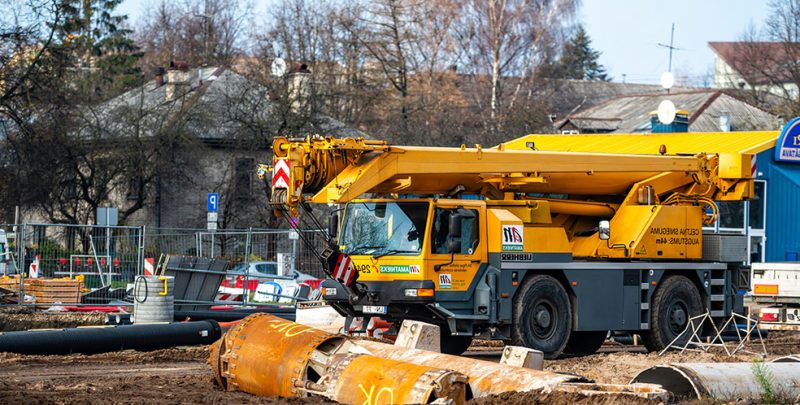How To Determine Crane Load Capacity

Lots of things are important in construction projects. While having the right equipment is essential, you must also consider all the required calculations regarding crane rigging and load lifting before starting the project.
One of the most important calculations that you must make is the crane load capacity. Knowing the crane load capacity helps make the project a lot safer both for you and the employees working on site. You can do that by taking a look at the crane load capacity chart. You can easily calculate the crane load capacity by using this formula.
Average (radius × max (lifting height × capacity))/100
Weight And Dimensions
The load chart is very useful in determining the crane load capacity. This chart includes data for outriggers, transport weight, and dimensions for steering. This data is very important since the lifting capacity mostly depends on the use of outriggers. Weight of the things to be transported determines the trailer used, and how the load is loaded onto the trailer. You might also need specific permits for the job.
You can easily read and understand the data displayed on the load chart. The number on the top of the chart is the gross weight of the vehicle. Rest of the two columns indicate the weight for each axle.
Lift Range
Calculating the lift range is very important. There is always a range diagram with lift charts to indicate how much boom length is needed to carry different weights upto certain heights.
Lift Capacity
You can also calculate the total lifting capacity of the crane for certain tasks. You can use the provided chart to see the specific lift that your crane needs to do. You should measure the maximum capacity by the shortest lift. The shortest lift of the crane is usually located on the rear of the crane when the outriggers are fully extended.
Lift Angle
Lift angle means the maximum lift if you’re using a fixed or luffing jib. By making out the crane lift angles, the maximum load capacity decreases. When Lufkin jibs are used with the crane, the angles can be easily adjusted from the operator’s cab. On the other hand, fixed jibs have fixed angles.
Crane In Motion
Crane in motion means the processes of picking and carrying the weights with the help of a crane. The load chart of the crane indicates the total weight picked up at 360 degree angles while the crane is stationary. The total weight can easily support the rolling load at a zero degree angle and the weight when the crane is moving.
How To Understand The Load Chart?
Every crane model comes with a load chart provided by its manufacturer. This chart indicates the total weight a crane model is capable of lifting. Every crane operator must study the load chart before starting to operate the crane when the project is in its planning stage.
Load charts are thorough, and they list all the important dimensions and lift capacity of the crane. There are also diagrams indicating the lift angles and lift ranges. Crane operators must know how to properly read and understand the load chart. Understanding the load chart is very important especially if you’re lifting stuff in a confined space.
Selecting The Right Crane And Operator
Before starting any project involving cranes, it is important that rigging experts thoroughly study the site and load charts to determine the type of crane they should use. A safe crane is that which can lift up the weights of up to a specific limit according to the requirements of the project. Operators also determine the type of surface they will be working on, as surface materials like asphalt can cause slipping issues in the summer season. Using outriggers can affect the maximum weight lifting capacity of a crane as well.
Since 2017, OSHA has required that every crane operator must get a specific type of training and should hold a certification to operate any crane. This step was taken to minimize crane accidents which are usually caused due to the operator’s error. Many incidents happen because the operator doesn’t read the load chart thoroughly before operating the crane. That is why you should also stick to the OSHA guidelines when hiring a crane operator and working with crane services VA.










